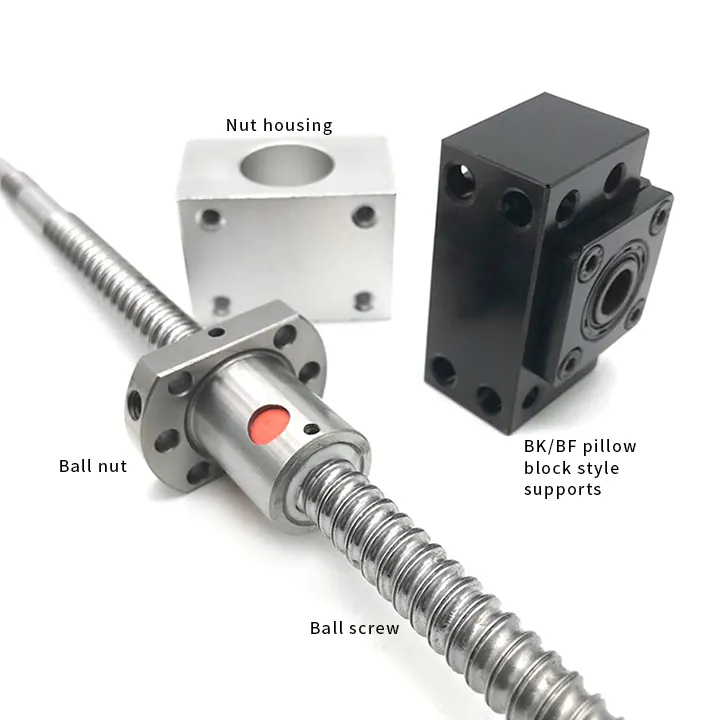Ball screws tend to be more expensive than lead screws for several reasons:
- Precision Manufacturing: Ball screws require precision machining to create the helical groove in the screw and the matching grooves in the nut. The manufacturing process demands tight tolerances to ensure the proper fit and alignment of the ball bearings. This level of precision increases the cost of production.
- Ball Bearings: The use of ball bearings in ball screws contributes to their higher cost. The ball bearings are typically made with high-quality materials and undergo precise manufacturing to ensure smooth rolling motion and durability. The inclusion of these precision components adds to the overall cost of the ball screw.
- Material Quality: Ball screws are often made from high-quality materials, such as hardened steel or other alloys, to withstand the stresses of high-speed and high-load applications. The selection of these materials contributes to the overall cost.
- Tighter Tolerances: Ball screws operate with much tighter tolerances compared to lead screws. This requires more meticulous manufacturing processes and quality control measures to ensure that the components meet the specified tolerances. Tighter tolerances lead to higher production costs.
- Reduced Friction and Backlash: The design of ball screws aims to minimize friction and backlash, which enhances their performance in terms of efficiency and precision. Achieving these characteristics requires careful engineering and manufacturing, adding to the complexity and cost of production.
- Application in High-Performance Systems: Ball screws are often used in high-performance applications, such as CNC machines, precision manufacturing equipment, and robotics, where precise and reliable linear motion is crucial. The demands of these applications drive up the cost of ball screws.
- Research and Development: The continuous improvement and development of ball screw technology also contribute to their cost. Manufacturers invest in research and development to enhance the performance and capabilities of ball screws, and these costs are reflected in the pricing.
- Market Demand: The demand for high-precision motion control components, like ball screws, often comes from industries where the cost is a secondary consideration compared to performance and reliability. This demand allows manufacturers to set higher prices for these specialized components.
In summary, the combination of precision manufacturing, high-quality materials, tight tolerances, reduced friction and backlash, and their application in high-performance systems all contribute to the relatively higher cost of ball screws compared to lead screws. The benefits they offer in terms of precision and efficiency justify their expense in applications where these qualities are critical.

